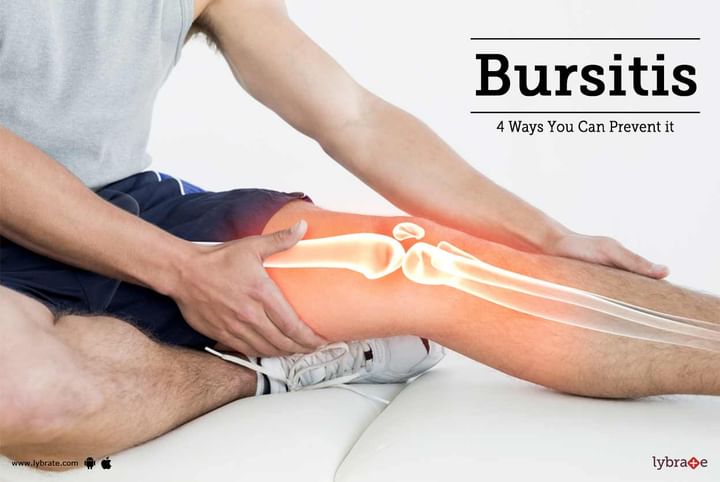Bursitis - 4 Ways You Can Prevent it
Bursitis is a disorder that is characterized by inflammation of a fluid filled sac called the bursa. Bursa is present in between various tissues such as muscles, tendons and bones where friction may occur. This sac cushions the tissues and prevents friction. The usual areas that are affected by this condition are hip, shoulder and the elbows.
The symptoms of bursitis are:
1. You will experience pain in the affected area
2. Tightness and stiffness in the area
3. Local swelling of the muscle
4. Redness of the area
5. Any physical contact with the area causes pain
Bursitis may also occur due to the following reasons:
1. Ageing results in loss of elasticity of the tendons, thus impairing their ability to tolerate any stressful activity
2. Sports such as baseball where you are required to throw the ball with force may lead to bursitis
3. If you do tasks that require kneeling down on a regular basis
4. Sitting on hard surfaces for extended periods of time
5. Abnormalities such as improperly placed joints
6. Inflammation from other conditions such as gout, thyroid disorders and rheumatoid arthritis may lead to bursitis
Treatment
The condition is treated by using a variety of methods such as exercise and medication. Antibiotics are used to treat any underlying infection causing bursitis. Injections may be administered to reduce inflammation in the affected area along with exercises to strengthen the affected muscle. In severe cases, the doctor may resort to surgery to treat this condition.
Prevention
You may use certain preventive measures to stay clear of bursitis. Some of them are
1. Lift with proper form: If you are lifting something heavy, then make sure you keep the spine straight and bend your knees slightly.
2. Take breaks: Don’t remain in the same position for long durations, take small breaks and walk around to release the stress from your legs.
3. Exercise: Do strength building workouts to build strength in the joints. Include mobility and flexibility stretches in your routine to keep your joints healthy, thus increasing the range of motion.
4. Maintain optimal weight levels: If you are obese, then take steps to reduce your weight. Maintain a proper diet to check your waistline. If you wish to discuss about any specific problem, you can consult a doctor and ask a free question.



+1.svg)
